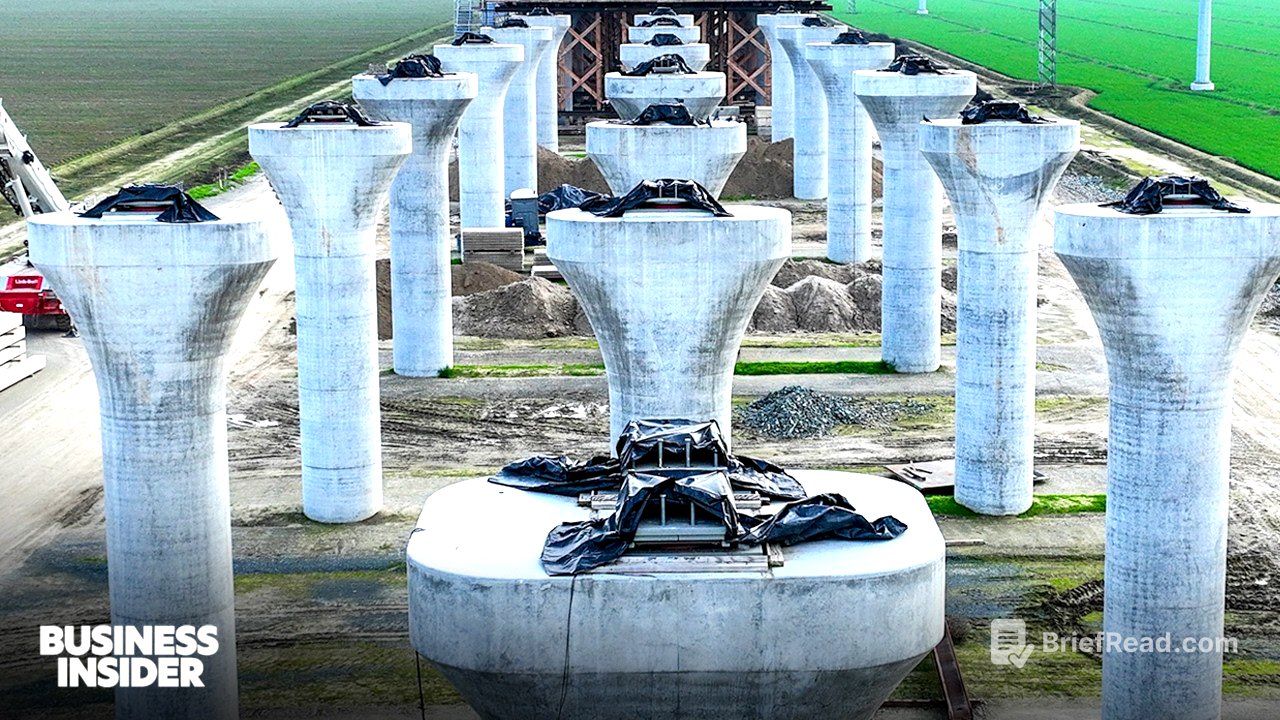TLDR;
The video explores why large projects frequently fail to stay on budget, on time, and deliver on their promises. It identifies common pitfalls such as lack of experience, inadequate planning, and the "uniqueness bias," where projects are incorrectly perceived as entirely unique, preventing the application of lessons from similar past endeavors. The video also highlights the importance of modularity, experienced teams, and clearly defining the "why" behind a project to ensure success.
- Eternal beginner syndrome affects projects like the Olympics, where each host nation starts from scratch.
- Lack of proper planning and experience led to the California high-speed rail's massive budget overruns and delays.
- Modularity, as seen in the Empire State Building, can significantly improve efficiency and reduce costs.
- Understanding the core purpose, as demonstrated by the Guggenheim Bilbao, is crucial for exceeding expectations.
Intro [0:00]
The video introduces the common problem of large projects failing to meet their initial goals regarding budget, timeline, and deliverables. It cites examples such as an $80 million tunnel-digging machine stuck in Seattle and California's high-speed rail project, which is significantly over budget and behind schedule. The video aims to explore the reasons behind these failures and identify the factors that contribute to successful project completion.
Olympics [0:49]
The Olympics are presented as a prime example of "eternal beginner syndrome," where each host country starts anew without effectively learning from past games. The Montreal Olympics is highlighted as a case where the main stadium's ambitious design, including a retractable roof, led to significant construction issues and cost overruns, ultimately burdening taxpayers for decades. Despite efforts to improve through reusing designs and hiring experienced firms, the Olympics continue to face challenges due to this recurring lack of institutional memory.
California High-Speed Rail [3:34]
California's high-speed rail project is portrayed as a major fiasco due to inadequate planning and a lack of experience. The project's initial budget of $30 billion has ballooned to over $100 billion, and it has yet to transport any passengers. A key issue was the failure to finalize the route early on, leading to political and legal battles over valuable farmland. The decision to hire primarily American firms, despite the United States' lack of high-speed rail experience, is identified as a critical factor in the project's struggles.
The World’s Biggest Tunnel Machine [6:20]
Seattle's tunnel project, which aimed to replace a surface highway with an underground tunnel, faced significant challenges due to the use of the world's largest boring machine. Because the machine was so novel, it was inherently inexperienced, leading to breakdowns and delays. The machine became stuck, requiring extensive repairs and causing numerous lawsuits, ultimately turning the project into a fiasco.
Sydney Opera House [7:30]
The Sydney Opera House is described as a project that, despite its eventual iconic status, was fraught with problems from the outset. Conceived by a politician seeking a legacy, the winning design by Yorn Utzon was visually stunning but lacked practical engineering solutions. Construction began without a clear plan, leading to budget blowouts and delays. The project took 14 years to complete and went 1,400% over budget. Although the Opera House became a world-famous landmark, its initial internal acoustics were so poor that it was unsuitable for opera performances.
Nuclear VS. Solar [10:00]
Nuclear and solar power projects are presented as contrasting examples on a spectrum of project success. Nuclear power plants typically involve unique designs for each plant in a unique location, preventing efficiency gains through repetition. In contrast, solar farms consist of identical solar panels that are repeatedly installed, allowing for significant improvements in efficiency through modularity. Modularity, the use of single identical building blocks, enables projects to benefit from the learning curve and achieve greater efficiency.
Empire State Building [12:34]
The Empire State Building is highlighted as a successful project completed rapidly and under budget. Its success was attributed to experienced construction companies and architects who had previously worked on a similar, smaller building. The design incorporated modularity, with each floor being nearly identical to the others, creating a "vertical assembly line." Despite opening during the Great Depression and not being initially financially successful, the Empire State Building exemplifies how doing everything right doesn't always guarantee immediate financial benefits.
Hoover Dam [15:04]
The Hoover Dam is presented as a successful project that was completed on time and under budget, despite being built in a harsh desert environment during the Great Depression. A key factor in its success was the experience of the construction manager, Frank Crowe, and the collaboration of six of the nation's most skilled engineering firms. Crowe's extensive experience in building hydroelectric dams and his team's familiarity with each other contributed significantly to the project's success.
Guggenheim Bilbao [16:55]
The Guggenheim Bilbao is cited as one of the most successful projects in modern history, delivering on its promises of budget, timeline, and benefits. Architect Frank Gehry initially questioned the project's purpose and realized that simply renovating an old building would not achieve the desired economic impact. He proposed building an eye-catching, unique structure that would attract global media attention and tourists, revitalizing the city's economy. The project exceeded expectations, attracting a large number of tourists and boosting the local economy.
Uniqueness Bias [18:54]
The video addresses the "uniqueness bias," where project managers tend to view their projects as entirely unique, preventing them from applying lessons learned from similar past projects. Instead of focusing solely on the specific details of a project, it is more effective to categorize it and analyze data from comparable projects to create a more accurate forecast. This approach involves gathering data on similar projects to determine average costs and timelines, providing a solid foundation for forecasting and allowing for adjustments based on specific project characteristics.









